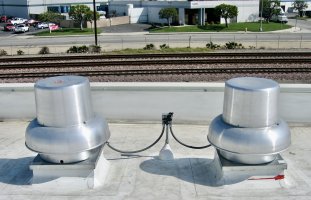Yankee Chronicler
SAWHORSE
I'm reviewing plans for a major addition to a large trucking company terminal building. They will be basically doubling the size of the existing terminal. The existing terminal has 60 truck bays, the addition will add another 40. The plans show parking spaces at one end of the terminal for twenty (20) fork lifts, with what appears to be thirteen (13) charging stations, plus one spare circuit.
The fork lift parking and charging area is all in one end of the open (indoor) terminal building. Are there any NFPA or OSHA codes or regulations addressing charging of fork lift batteries, storage of spare batteries, or where fork lift batteries can be serviced? Going back 30 or 40 years I remember working on a factory that had a special room, with fire-rated concrete masonry walls all around, for battery charging. But that was a long time ago and all the codes have changed multiple times since then.
My state does not appear to have adopted NFPA 70E, if that matters.
If you have any advice, I'd appreciate it.
The fork lift parking and charging area is all in one end of the open (indoor) terminal building. Are there any NFPA or OSHA codes or regulations addressing charging of fork lift batteries, storage of spare batteries, or where fork lift batteries can be serviced? Going back 30 or 40 years I remember working on a factory that had a special room, with fire-rated concrete masonry walls all around, for battery charging. But that was a long time ago and all the codes have changed multiple times since then.
My state does not appear to have adopted NFPA 70E, if that matters.
If you have any advice, I'd appreciate it.


